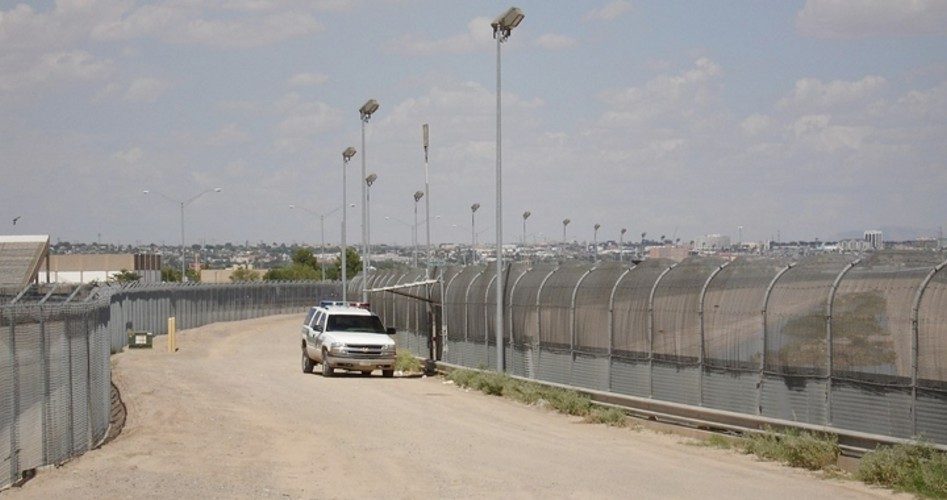
On Friday, U.S. Customs and Border Protection (CBP) announced plans to construct a four-mile segment of President Trump’s long-proposed border wall. The new section will replace existing and outdated chain-link fencing in the El Paso Border Patrol Sector, along the Rio Grande River between El Paso, Texas, and Ciudad Juarez, Mexico.
The new barrier will be made of steel bollards and include a five foot “anti-climbing” section at the top. It is a vast improvement on the obsolete chain-link fencing currently in place.
“This new wall will be far more durable and far more effective in deterring would-be illegal entrants,” said Aaron Hull, the Chief Patrol Agent in the El Paso sector.
Construction will begin just south of the “Chihuahuita” area, the oldest neighborhood in El Paso, and run east for four miles, according to the plan. The new portion of border wall follows an April announcement of the construction of a twenty-mile stretch of border wall in nearby Santa Teresa, New Mexico.
The El Paso area is a good place to upgrade border security. Despite the best efforts of the Border Patrol and the Trump administration, the area has seen a large spike in attempted illegal entries.
“Here in the El Paso sector, if you compare 2017 to 2018 year-to-date, you’ll see a 61% increase in entries,” Hull said.
In the El Paso sector in 2017, CPB captured over 25,000 migrants attempting to enter the United States illegally. In addition, it seized more than 34,000 pounds of marijuana and 140 pounds of cocaine. There were 54 reported assaults against border patrol agents in the El Paso sector.
The announcement shows that the border wall — one of the main tenets of the president’s 2016 campaign — is moving forward, albeit at a snail’s pace. As of today, Congress has only appropriated 1.6 billion of the 25 billion dollars that President Trump is seeking for the project. Trump has signaled that he would consider a government shutdown should Congress continue to refuse funding for the project.
Mexico’s President-elect, Andrés Manuel López Obrador, weighed in on the announcement. Speaking in the Mexican border state of Sonoma, Lopez Obrador told reporters, “The migration problem is not solved by building walls or by use of force, but it’s a diplomatic job of respect.”
Still, the new president, who officially takes office on December 1, was reluctant to battle with Trump over the border wall. “We are not going to fight with the U.S. government, we are not going to fight with President Donald Trump,” Lopez Obrador said.
Locally, El Paso County officials are set to sign a document as early as today voicing their objection to the announced project. The letter claims that construction of the new barrier “needlessly causes separation of our bi-national community and puts the lives and well-being of migrants and border residents alike at risk.”
The letter under consideration also claims the new construction sends the wrong message to Mexico. “This new wall construction is a symbol of hate aimed toward our friends, allies, trading partners and families in Mexico.”
Further, the document calls for U.S. immigration policies “that advance hugs — through the reunification of immigrant families, the decriminalization of migration, the demilitarization of our border, and the facilitation of trade, commerce and exchange — instead of walls.”
Most people are all for hugs; just not as federal policy.
It might be useful to note the type of things that the CBP is attempting to control on the southern border. Just this weekend, the CBP reported that it seized a 1.6 million dollar shipment of methamphetamine at Hidalgo, Texas. CBP agricultural specialists stopped a shipment containing a harmful pest, the gypsy moth, from entering the United States. The CBP also arrested a known member of the vicious criminal gang MS-13 at the Calexico, California, Point of Entry.
If the Border Patrol agents believe that a barrier on the border with Mexico will assist them with their jobs, it needs to get built — and built as soon as possible.





